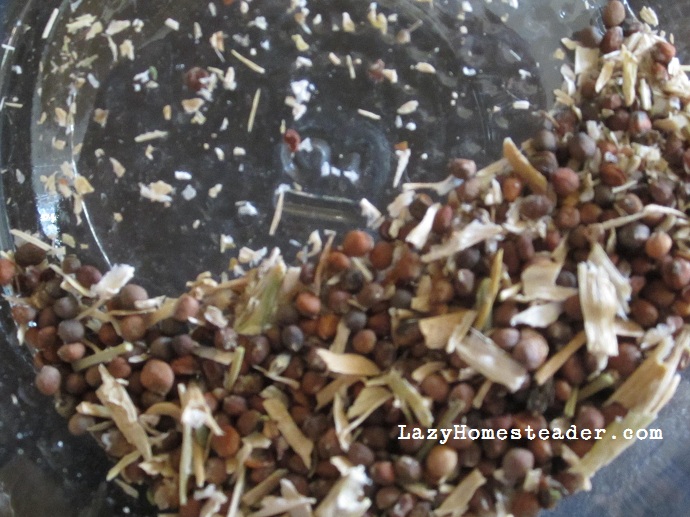I realize that in some parts of the country, there is still snow on the ground. Down here in central Texas, though, I just finished mowing the lawn for the second time. Whew! I’m grateful that our backyard here is modest, since even this “mild” spring weather is hot to me.
Here are some tips in case you are new to using a push-reel mower and finding it difficult.
1. Clean the yard first. Our power mower could chop up sticks, but twigs will get caught in the reel of the push mower, bringing you to a stop and you’ll have to reverse the blades to get it out before you continue mowing. Frequent starts and stops require a lot more energy than maintaining momentum. A few minutes spent looking for sticks and rocks and small kids’ toys, anything that might get caught in the mower’s blades, and removing them from the grass before you get started is time well spent.
2. Set your blades higher. Longer grass uses less water, and higher blades will promote that, taking just a little off the top. If you cut the grass shorter, it might need more passes of the mower, which can double (or more) the time you spend mowing.
3. Mow more often. While longer grass is good for water conservation, let it get too long and you’ll have trouble getting the push mower through it at all. This is especially true of thick lawns or lawns with hills. Our new lawn has a bit of a rise in one area and that grass is harder to mow. If we were to “let it go” it would be very difficult to cut with the push mower.
4. Use a trimmer for the edges. I’ve had a hard time getting the push mower to do a good job cutting the grass at the edges of the lawn where it meets with the fence or the patio. Instead of struggling over those areas over and over, I just mow as close as I can and then clean up the edges with the trimmer.
5. Mow in sections. Our front yard here is about the same size as it was in Colorado, but the grass here is thick and harder to get the mower through. It makes the job tough for me in the heat (I know! Wimpy Colorado girl in Texas!). Instead of sweating my way through the whole job at once, I break it into two or three more manageable chunks. The mower is lightweight so it’s no big deal to walk it back to the backyard while I take a break, get a drink or water my garlic. Then after I’m refreshed, I take on the next section of lawn. I can still get the job done, both front and back yards, in under an hour including the breaks.






























































